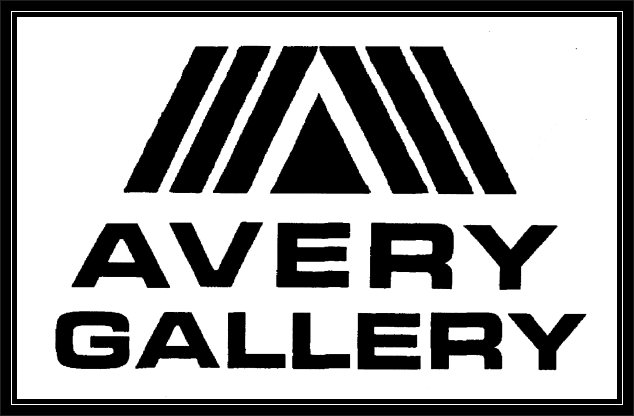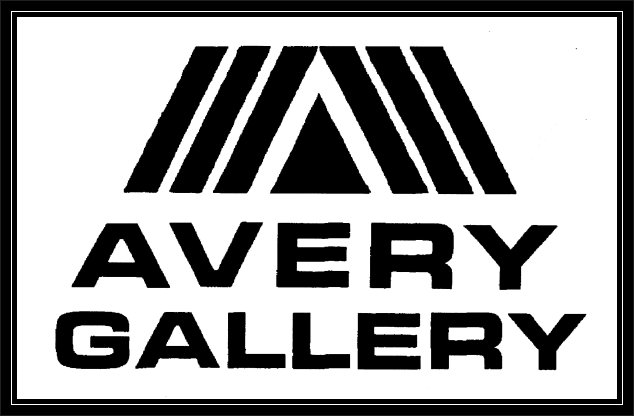Antonio Diego Voci
Antonio Diego Voci
(1920 - 1985)
Diego Voci was born Antonio Innocenzo Voci on August 10, 1920 in Gasperina, in the mountainous southern Italian province of Catanzaro. Antonio was the youngest of three preceded by his brothers Giuseppe and Vincenzo. Their father, Giuseppantonio, was a textile merchant, in the proud tradition of many from this former Silk Road outpost. Archangela (nee Messina) was their mother.
At the time of Diego's birth, the hill town of Gasperina had fewer than two thousand residents and would have looked nearly unchanged from prior centuries, despite the great earthquakes of 1905 and 1783 that leveled much of Catanzaro. White, red tile-roofed buildings stand stark against the scratched volcanic hills upon which the town was impossibly constructed. The white sand beaches of the Ionian Gulf which lie just two miles south of and two thousand feet lower in elevation than Gasperina. High Middle Age and Middle Byzantine architecture was brought to Southern Italy by Greeks, Romans, Byzantines, Normans and Bourbons by the winds across the Mediterranean, creating the cultural center of the region in nearby Reggio Calabria.
All three Voci boys were sent to Reggio to study Tailoring. Vincenzo, the eldest by fifteen years, was the only one to pursue the craft as a profession and immigrated to America when Diego was a boy and became one of the great Tailors of his time in Philadelphia. The middle brother, Giuseppe, stayed in Italy to become a professional musician, and played in the Rome Orchestra.
Diego's art came naturally and at a young age. Inspired by his parents, he won a scholarship for a design course in Rome when he was twelve. He continued his education at the Lyce d' Art for three years studying the classical styles of sculpture and painting. In 1939 at the age of 19 Diego enrolled at the Academy San Marco in Florence, but his studies were interrupted by the war.Diego served in the Italian Army during World War II, as did his older brother Giuseppe. Their brother Vince had moved to America and married Anna Spadea, the niece of decorated Italian General Nicola Spadea. General Spadea had been a prisoner of war (POW) in Ethiopia as a Corporal and would later become a NATO representative for Italy after the War. Diego became a POW after being captured by the Germans. His POW camp was in Northern Germany. His captors so respected his talents that he was given deferential treatment that included coffee and chocolate, luxuries unavailable to most Germans at the time. Few details and no art from this era remain. With the War over, Diego returned to Florence and the Academy San Marco completing his studies there in 1948.
Next he went to live in Paris to further his education at the Ecole des Beaux-Arts, heavily influenced by Cézanne, Degas, and Van Gogh and the impressionists of the time. He traveled extensively throughout Europe, North Africa, Turkey, Scandinavia, and England. He moved to Venice in 1949 painting and sculpting and displaying his work in Torino, Capri and Venice. It was here in 1951 that the city of Venice sponsored showcase for Italian Artists. Carlo Carrà (1881–1966) noted figure of the Futurist movement and arguably the most important Italian artist at the time, won first prize. Diego won second prize. The recognition from this great accomplishment led to a series of gallery showings in Switzerland and Italy. He painted for galleries who had handled master artists including Rembrandt, Renoir, and Monet. His first one-man show was at the Galleria La Bussula in Torino, Italy.
Diego profited in Post-War Germany during the 1950s painting [drawing and] portraits of American Soldiers and Officers. Diego gave away many great works to innkeepers and café owners throughout Italy, Switzerland and Germany. He traveled continuously during this period showing in Milan, Rome, Torino and other European cities. He also accepted commissions to do frescos, sculptures, relief sculptures and canvases at several Italian restaurants, galleries and private collectors throughout Europe.
Diego also worked with Antonio Calcagnadoro (1876-1935) and assisted Brossi in painting a Fresco for a village church near Rome. He also worked with his mentor Felice Carena (1879–1966), one of Italy's great religious artists, whose paintings can be found in the Museum of Modern Art in Rome. Diego was known for his photographic memory as he seldom used sketches or models and painted principally from memory. His skill and versatility was astonishing. Diego's styles range from Italian Renaissance to Realism, Impressionism, figurative, surrealism, semi-abstract, to abstract. He mastered techniques using brushes and knives for his oils, charcoal, inks, watercolor, and tempera for his drawings and sketches, plaster, wood, metal and plastic for his sculptures. The artist loved texture and used various media to achieve the textural affects he desired.
During the mid-1950s Diego settled in Germany not far from Würzburg where his American nephew, the son of Vince and Anna, Anthony Voci, was stationed as a Tank Commander after the War. Anthony spent much of his free time touring Germany, Switzerland and Northern Italy with Diego during the late 1950s. He would paint or sketch nearly every waking minute while traveling with his American Nephew.
In 1963, a painting by DIEGO signed “A.Voci” or “D. Voci” was selected by an Air Force Officer from the 526th Tactical Interceptor Squadron and flown from Aviano Air Force Base to Wiesbaden. On Tuesday, the evening of June 25, 1963, the painting was presented to President John F. Kennedy at the General Von Steuben Hotel.
He continued to have one-man shows in several of Italy's largest cities and was also approached by Alfa Romeo to do a commission for them in 1966. He traveled to America several times in in 1973 to visit his brother Vince, nephew Anthony and Vince's daughter Lena and their families outside of Philadelphia. He painted watercolors of the American Southwest and had a one-man show at the Broadmoor Hotel in Colorado Springs in 1973.
Diego married Helga Drössler with whom he lived in Wiesbaden with their daughter Alessandra. Diego continued to work prolifically throughout the 1970s and 1980s and Helga ran the gallery. Diego died suddenly in 1985 from lung cancer shortly after a visit from his nephew Anthony. Helga resides in Wiesbaden near Alessandra and her grandsons Tommy and Timo.
At the time of Diego's birth, the hill town of Gasperina had fewer than two thousand residents and would have looked nearly unchanged from prior centuries, despite the great earthquakes of 1905 and 1783 that leveled much of Catanzaro. White, red tile-roofed buildings stand stark against the scratched volcanic hills upon which the town was impossibly constructed. The white sand beaches of the Ionian Gulf which lie just two miles south of and two thousand feet lower in elevation than Gasperina. High Middle Age and Middle Byzantine architecture was brought to Southern Italy by Greeks, Romans, Byzantines, Normans and Bourbons by the winds across the Mediterranean, creating the cultural center of the region in nearby Reggio Calabria.
All three Voci boys were sent to Reggio to study Tailoring. Vincenzo, the eldest by fifteen years, was the only one to pursue the craft as a profession and immigrated to America when Diego was a boy and became one of the great Tailors of his time in Philadelphia. The middle brother, Giuseppe, stayed in Italy to become a professional musician, and played in the Rome Orchestra.
Diego's art came naturally and at a young age. Inspired by his parents, he won a scholarship for a design course in Rome when he was twelve. He continued his education at the Lyce d' Art for three years studying the classical styles of sculpture and painting. In 1939 at the age of 19 Diego enrolled at the Academy San Marco in Florence, but his studies were interrupted by the war.Diego served in the Italian Army during World War II, as did his older brother Giuseppe. Their brother Vince had moved to America and married Anna Spadea, the niece of decorated Italian General Nicola Spadea. General Spadea had been a prisoner of war (POW) in Ethiopia as a Corporal and would later become a NATO representative for Italy after the War. Diego became a POW after being captured by the Germans. His POW camp was in Northern Germany. His captors so respected his talents that he was given deferential treatment that included coffee and chocolate, luxuries unavailable to most Germans at the time. Few details and no art from this era remain. With the War over, Diego returned to Florence and the Academy San Marco completing his studies there in 1948.
Next he went to live in Paris to further his education at the Ecole des Beaux-Arts, heavily influenced by Cézanne, Degas, and Van Gogh and the impressionists of the time. He traveled extensively throughout Europe, North Africa, Turkey, Scandinavia, and England. He moved to Venice in 1949 painting and sculpting and displaying his work in Torino, Capri and Venice. It was here in 1951 that the city of Venice sponsored showcase for Italian Artists. Carlo Carrà (1881–1966) noted figure of the Futurist movement and arguably the most important Italian artist at the time, won first prize. Diego won second prize. The recognition from this great accomplishment led to a series of gallery showings in Switzerland and Italy. He painted for galleries who had handled master artists including Rembrandt, Renoir, and Monet. His first one-man show was at the Galleria La Bussula in Torino, Italy.
Diego profited in Post-War Germany during the 1950s painting [drawing and] portraits of American Soldiers and Officers. Diego gave away many great works to innkeepers and café owners throughout Italy, Switzerland and Germany. He traveled continuously during this period showing in Milan, Rome, Torino and other European cities. He also accepted commissions to do frescos, sculptures, relief sculptures and canvases at several Italian restaurants, galleries and private collectors throughout Europe.
Diego also worked with Antonio Calcagnadoro (1876-1935) and assisted Brossi in painting a Fresco for a village church near Rome. He also worked with his mentor Felice Carena (1879–1966), one of Italy's great religious artists, whose paintings can be found in the Museum of Modern Art in Rome. Diego was known for his photographic memory as he seldom used sketches or models and painted principally from memory. His skill and versatility was astonishing. Diego's styles range from Italian Renaissance to Realism, Impressionism, figurative, surrealism, semi-abstract, to abstract. He mastered techniques using brushes and knives for his oils, charcoal, inks, watercolor, and tempera for his drawings and sketches, plaster, wood, metal and plastic for his sculptures. The artist loved texture and used various media to achieve the textural affects he desired.
During the mid-1950s Diego settled in Germany not far from Würzburg where his American nephew, the son of Vince and Anna, Anthony Voci, was stationed as a Tank Commander after the War. Anthony spent much of his free time touring Germany, Switzerland and Northern Italy with Diego during the late 1950s. He would paint or sketch nearly every waking minute while traveling with his American Nephew.
In 1963, a painting by DIEGO signed “A.Voci” or “D. Voci” was selected by an Air Force Officer from the 526th Tactical Interceptor Squadron and flown from Aviano Air Force Base to Wiesbaden. On Tuesday, the evening of June 25, 1963, the painting was presented to President John F. Kennedy at the General Von Steuben Hotel.
He continued to have one-man shows in several of Italy's largest cities and was also approached by Alfa Romeo to do a commission for them in 1966. He traveled to America several times in in 1973 to visit his brother Vince, nephew Anthony and Vince's daughter Lena and their families outside of Philadelphia. He painted watercolors of the American Southwest and had a one-man show at the Broadmoor Hotel in Colorado Springs in 1973.
Diego married Helga Drössler with whom he lived in Wiesbaden with their daughter Alessandra. Diego continued to work prolifically throughout the 1970s and 1980s and Helga ran the gallery. Diego died suddenly in 1985 from lung cancer shortly after a visit from his nephew Anthony. Helga resides in Wiesbaden near Alessandra and her grandsons Tommy and Timo.
- Little Girl with Hat
- Oil on Canvas
- Canvas Size: 31-3/4" x 15-3/4"
- With Frame: 35" x 19-1/4"
- $3,500.00
© 2025
All Rights Reserved | Avery Gallery, Inc.




